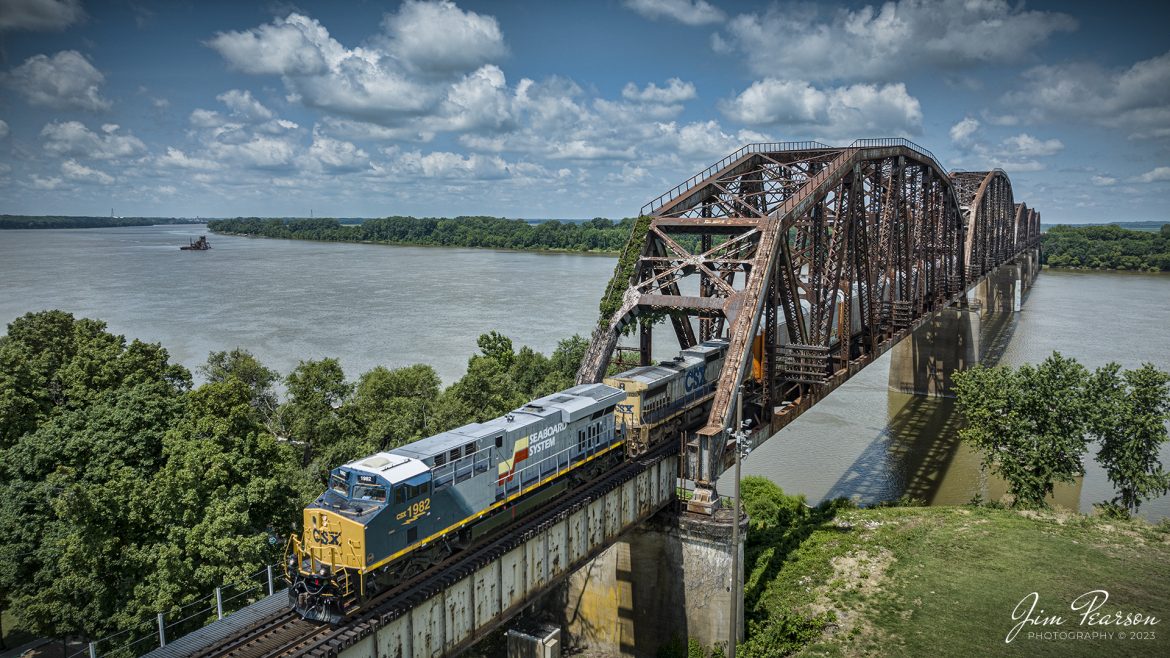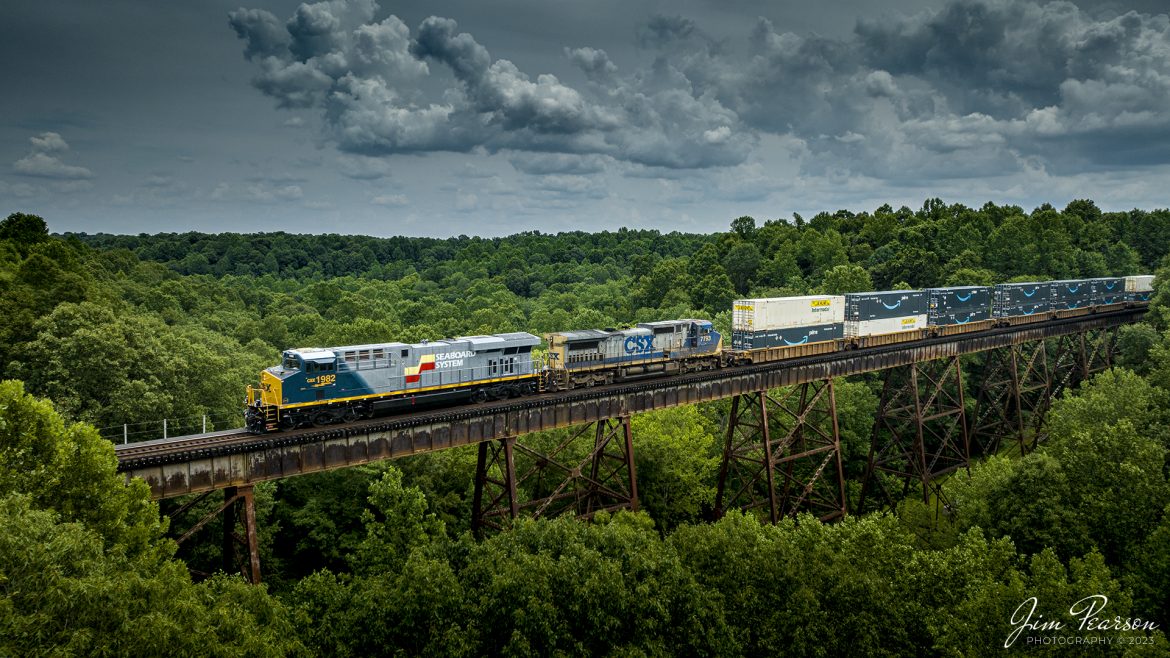CSX Heritage series locomotive 1973, the Chessie System unit, pulls a empty coal train at Trident in Madisonville, Kentucky onto the Morganfield Branch as they head for the Warrior Coal Loop, outside of Nebo, Kentucky on August 13th, 2023, where it will load their train CSX R592.
According to Wikipedia: The three railroads that would make up the Chessie System had been closely related since the 1960s. C&O had acquired controlling interest in B&O in 1962, and the two had jointly controlled WM since 1967.
Chessie System, Inc. was a holding company that owned the Chesapeake and Ohio Railway (C&O), the Baltimore and Ohio Railroad (B&O), the Western Maryland Railway (WM), and Baltimore and Ohio Chicago Terminal Railroad (B&OCT). Trains operated under the Chessie name from 1973 to 1987.
On November 1, 1980, Chessie System merged with Seaboard Coast Line Industries to form CSX Corporation. Initially, the three Chessie System railroads continued to operate separately, even after Seaboard’s six Family Lines System railroads were merged into the Seaboard System Railroad on December 29, 1982. That began to change in 1983, when the WM was merged into the B&O. The Chessie image continued to be applied to new and re-painted equipment until July 1, 1986, when CSXT introduced its own paint scheme. In April 1987, the B&O was merged into the C&O. In August 1987, C&O merged into CSX Transportation, a 1986 renaming of the Seaboard System Railroad, and the Chessie System name was retired.
Tech Info: DJI Mavic 3 Classic Drone, RAW, 24mm, f/2.8, 1/320, ISO 130.

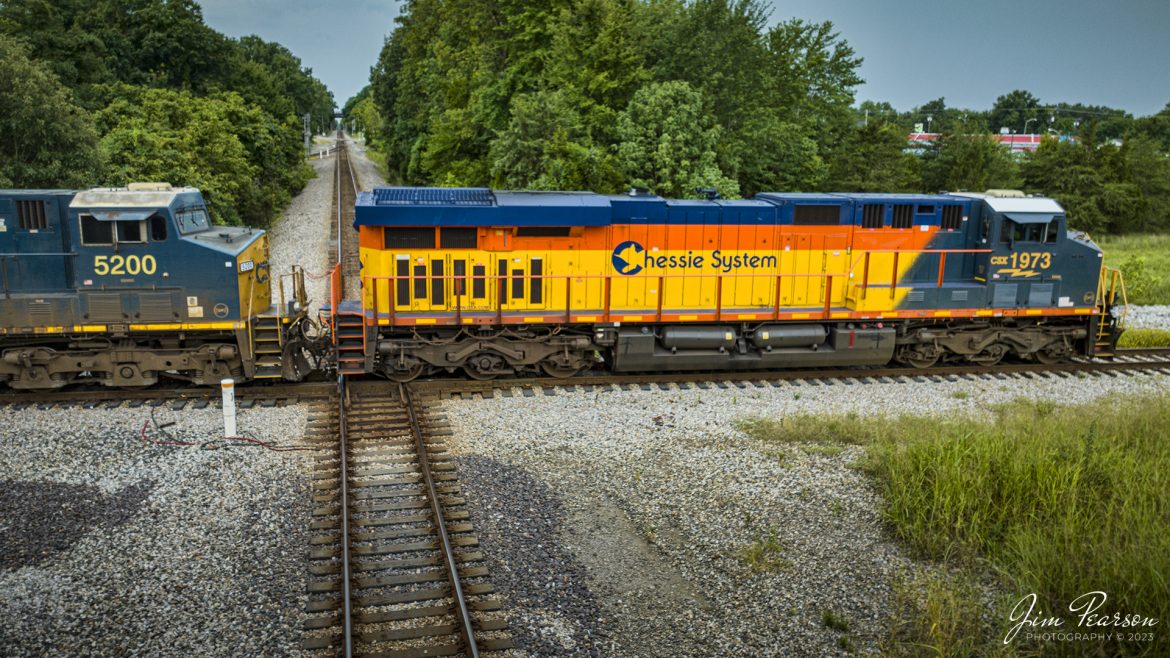
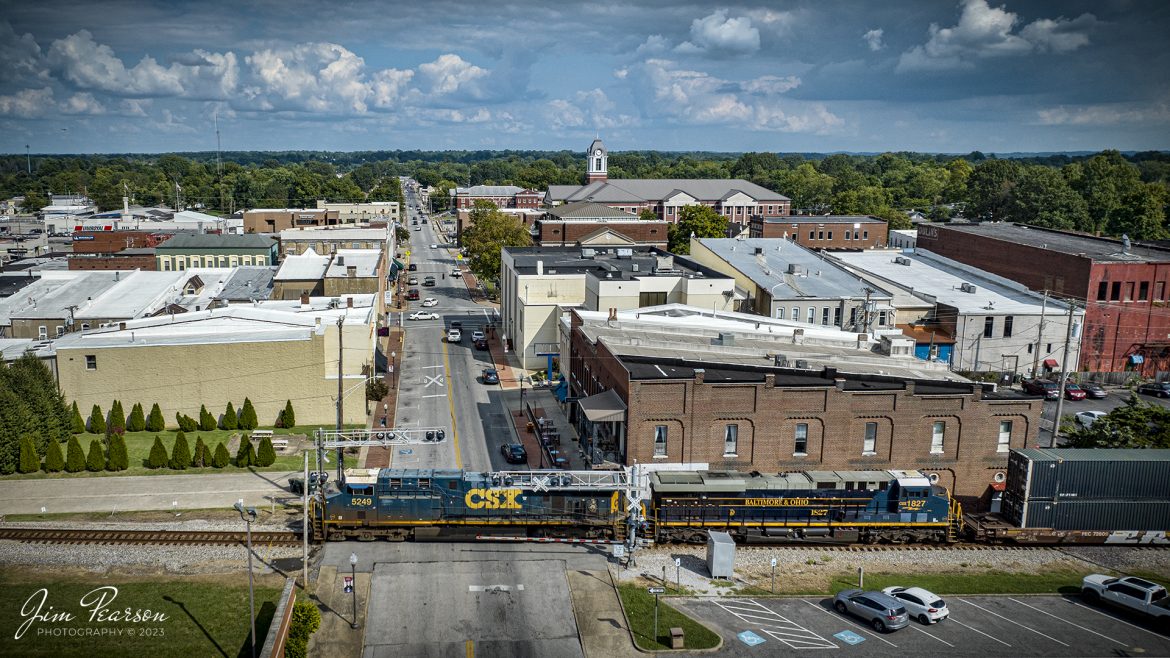
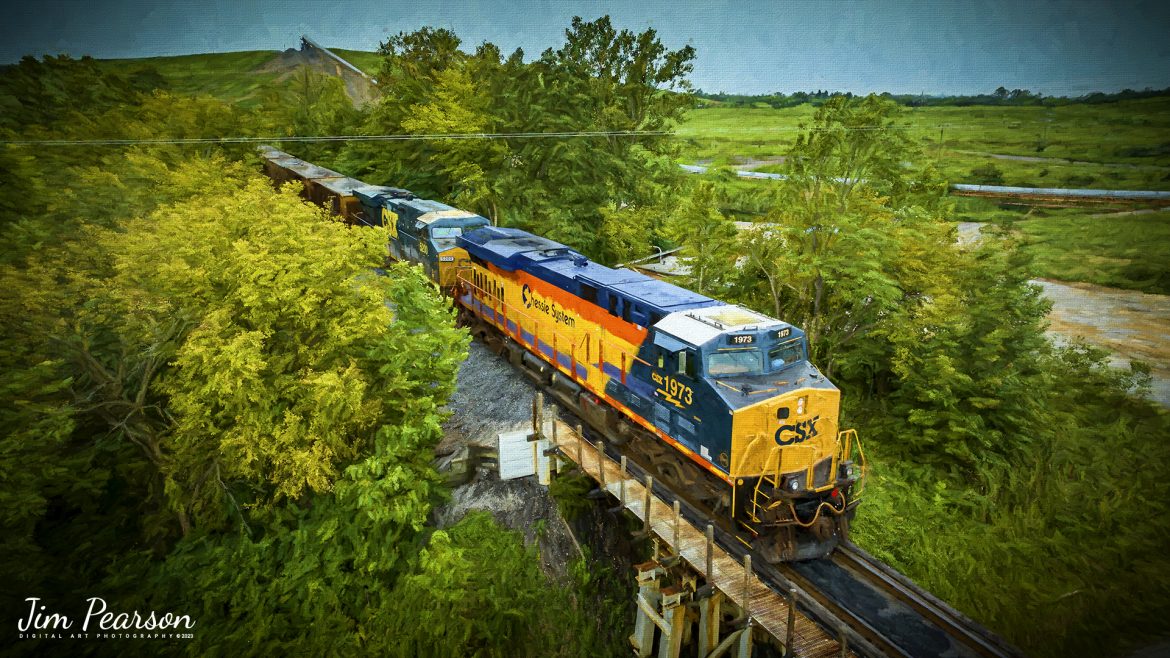
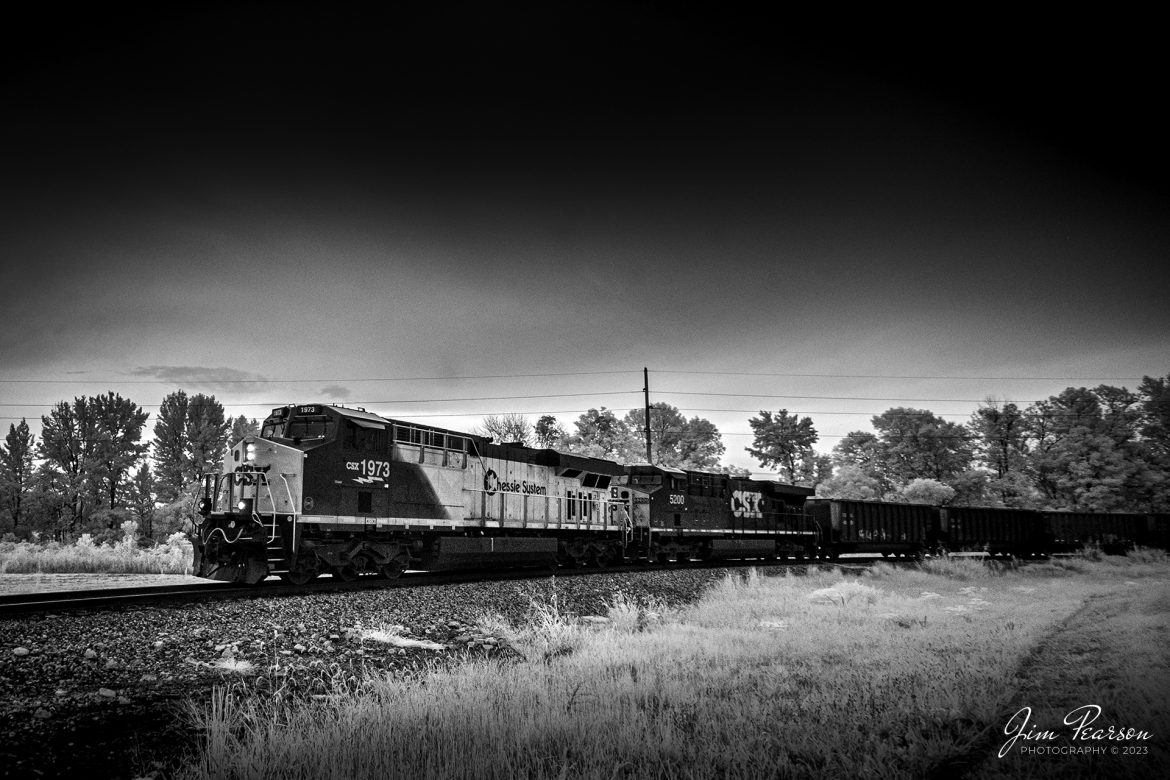
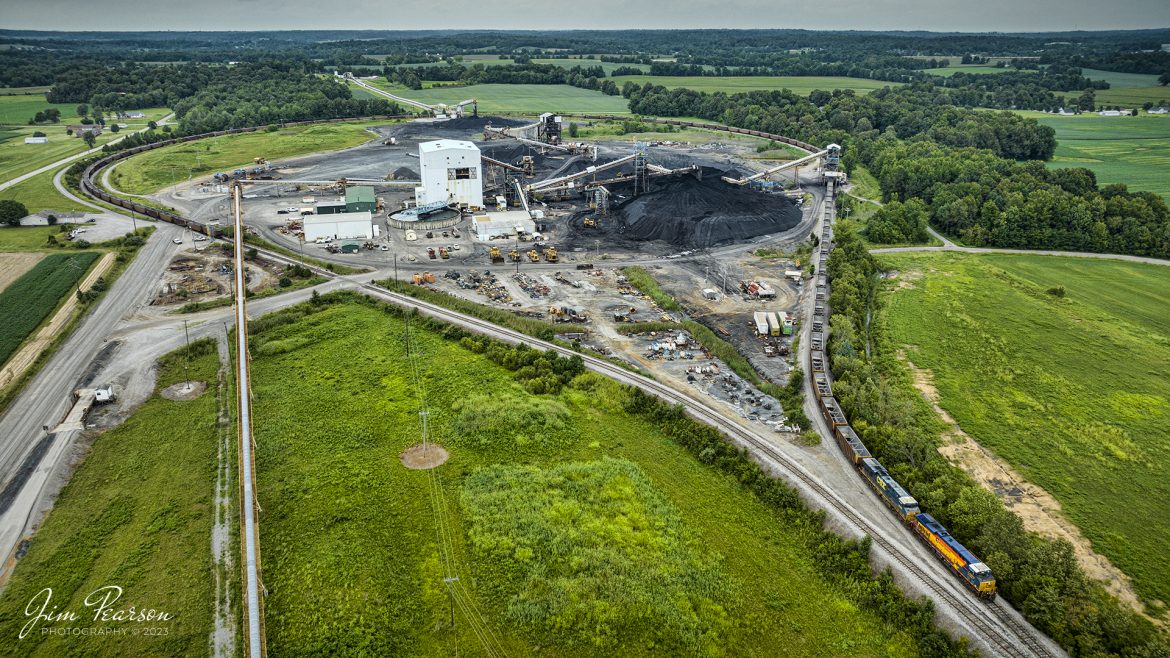
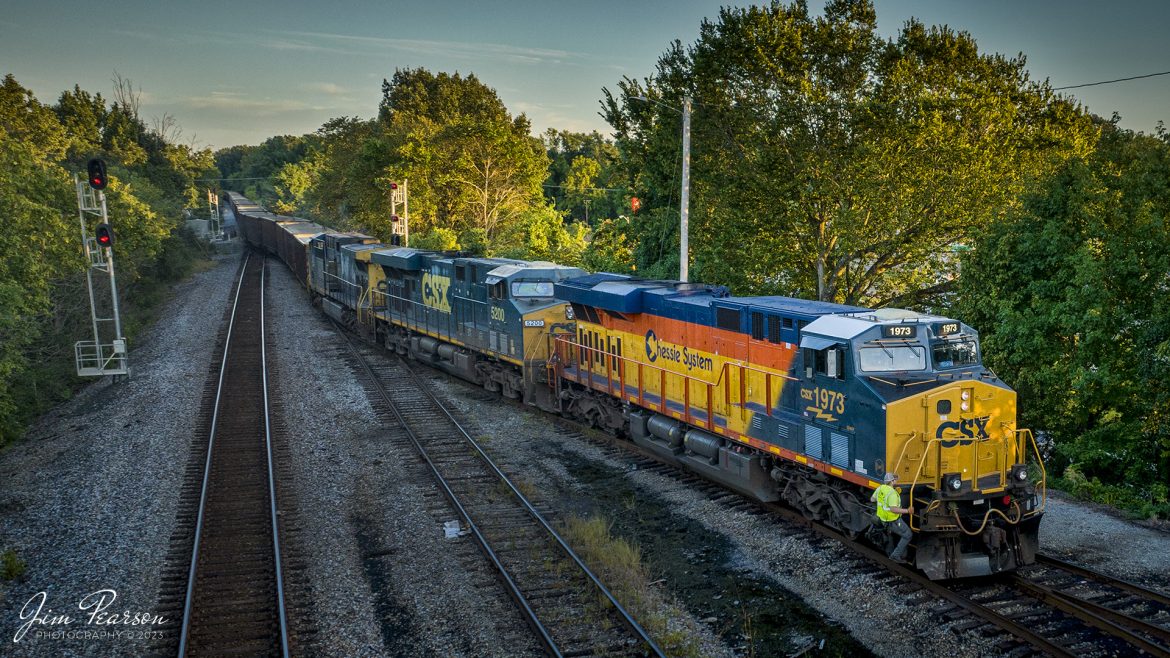
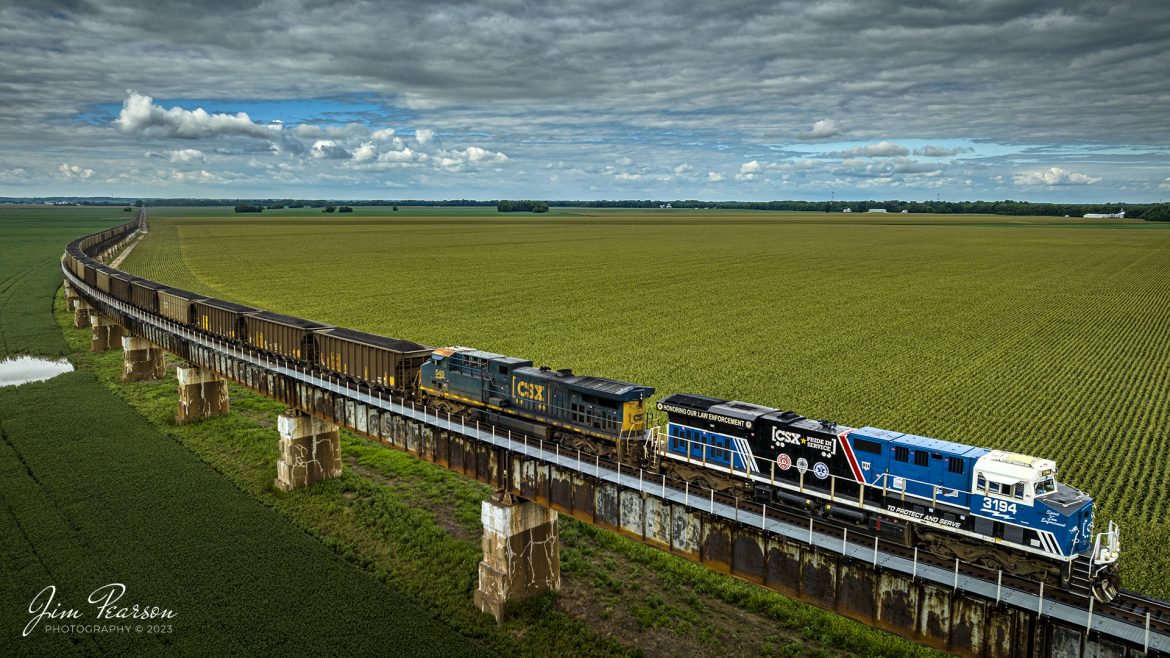
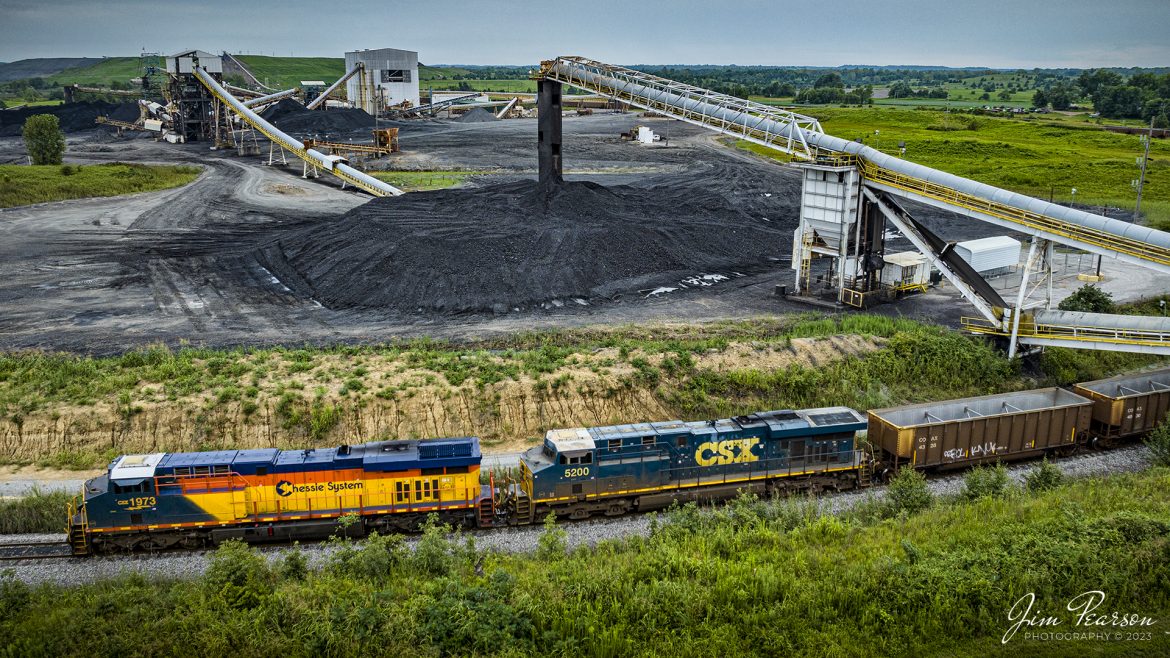
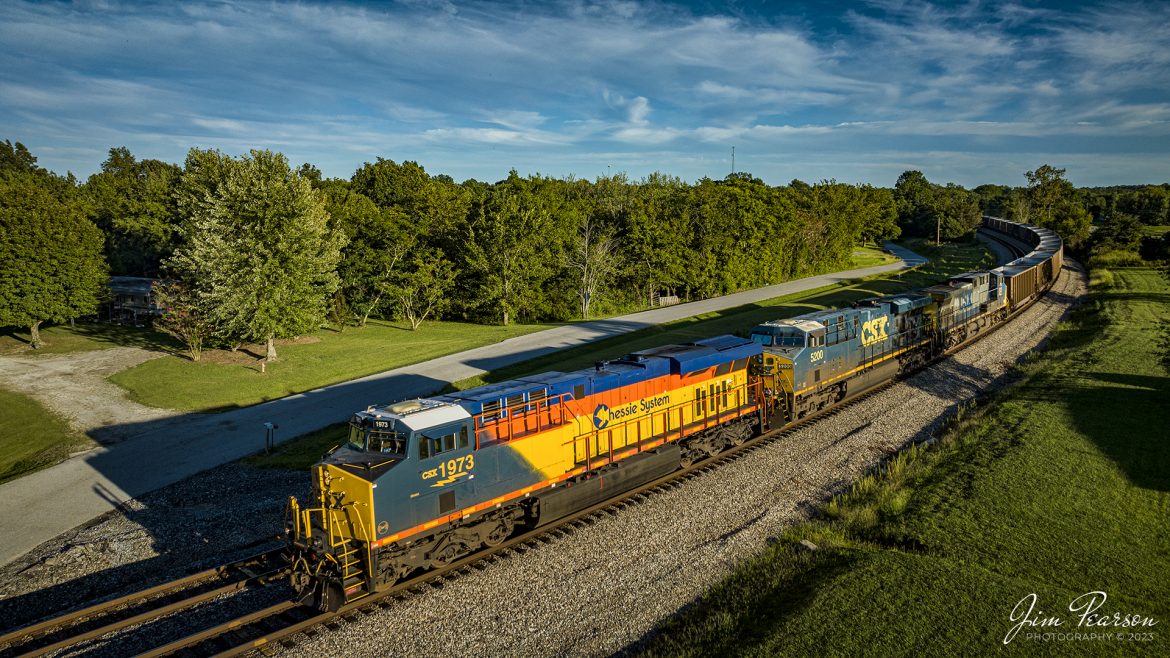
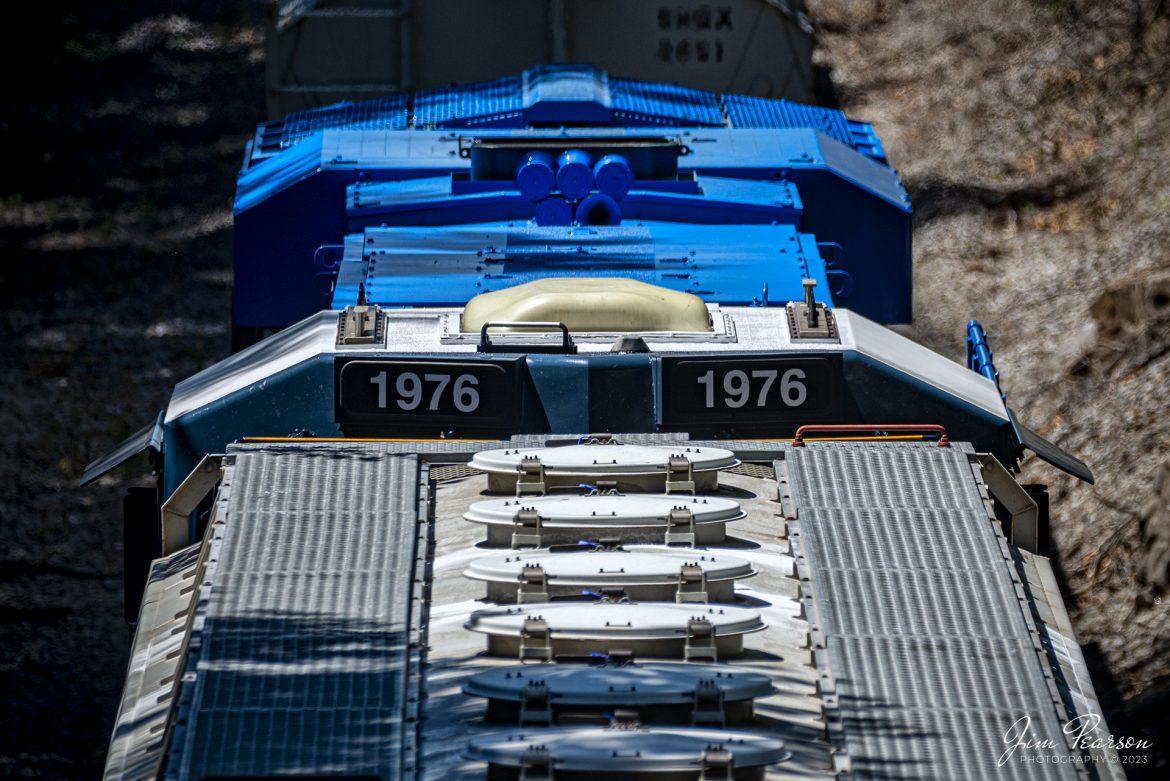
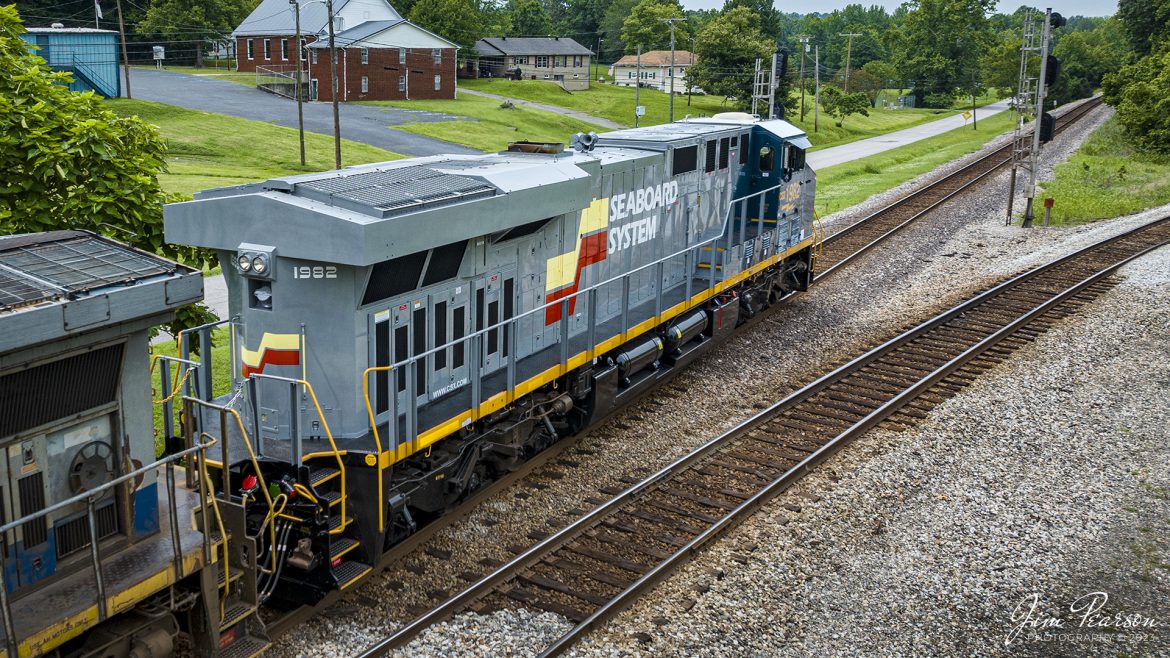
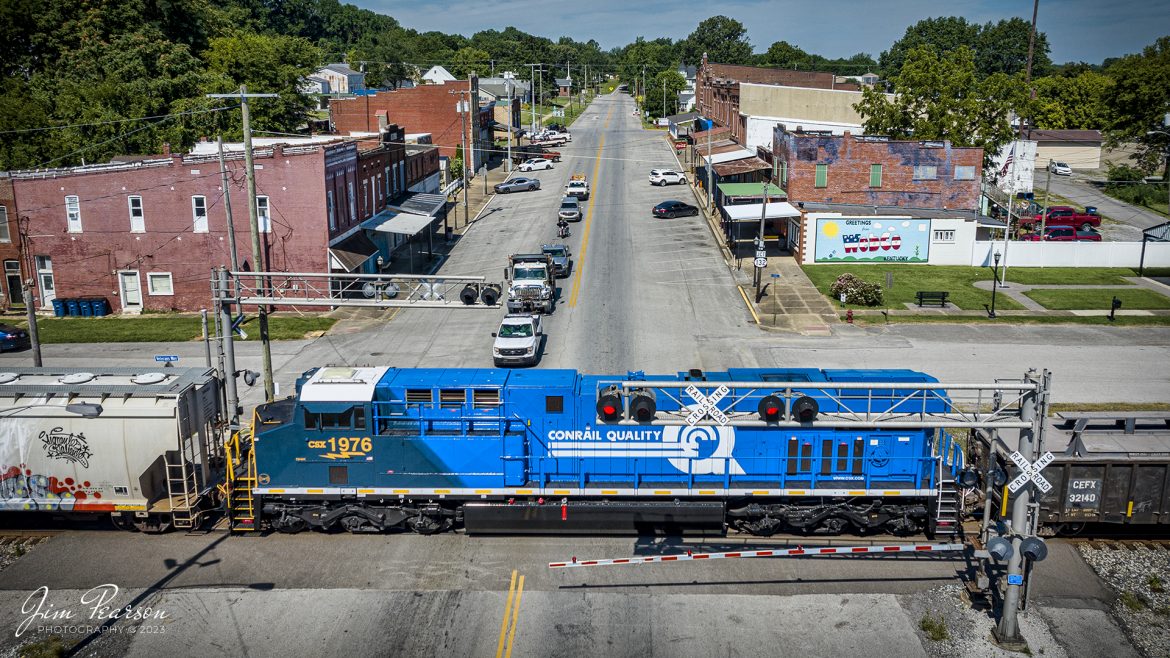
![The new CSX Heritage series locomotive, the Baltimore & Ohio unit 1827, leads CSX hot intermodal I028 (one the CSX CE&D Sub) as it prepares to cross over the old B&O line (Illinois Subdivision) at Vincennes, Indiana, on July 17th, 2023. The old B&O Union Station and Hotel used to sit inside the wye you see pictured here.
According to Wikipedia: The Baltimore and Ohio Railroad was the first common carrier railroad and the oldest railroad in the United States with its first section opening in 1830.
The Chesapeake and Ohio Railway took financial control of the B&O in 1963.[52] On May 1, 1971, Amtrak had taken over all the remaining non-commuter routes of the B&O. The B&O already had a controlling interest in the Western Maryland Railway. In 1973 the three railroads were brought together under one corporate identity, the Chessie System, although they continued to operate as separate railroads.
In 1980 the Chessie System and Seaboard Coast Line Industries, a holding company that owned the Seaboard Coast Line, the Louisville & Nashville, the Clinchfield, and the Georgia Railroad, agreed to form CSX Corporation. SCL Industries was renamed the Seaboard System Railroad (SBD) in 1983, the same year that the Western Maryland Railway was completely absorbed into the B&O. SBD was renamed CSX Transportation (CSX) in 1986. On April 30, 1987, the B&O's corporate existence ended when it was absorbed into the Chesapeake and Ohio Railway, which merged into CSX Transportation on August 31 of that year.
Tech Info: DJI Mavic 3 Classic Drone, RAW, 24mm, f/2.8, 1/2000, ISO 270.
#trainphotography #railroadphotography #trains #railways #dronephotography #trainphotographer #railroadphotographer #jimpearsonphotography #trains #csxt #mavic3classic #drones #trainsfromtheair #trainsfromadrone #CSXHeritageUnits](http://www.jimpearsonphotography.com/wp-content/uploads/2023/07/WEB-07.17.23-Drone-CSX-I028-NB-with-BO-Heritage-Unit-1827-at-Vincennes-IN-1170x658.jpg)
![The new CSX Heritage series locomotive, the Baltimore & Ohio unit 1827, leads CSX hot intermodal I028 as it down the viaduct at Rahm, Indiana after crossing the Ohio River at Henderson, Ky, on its northbound move up the Henderson Subdivision, on July 17th, 2023.
According to Wikipedia: The Baltimore and Ohio Railroad was the first common carrier railroad and the oldest railroad in the United States with its first section opening in 1830.
The Chesapeake and Ohio Railway took financial control of the B&O in 1963.[52] On May 1, 1971, Amtrak had taken over all the remaining non-commuter routes of the B&O. The B&O already had a controlling interest in the Western Maryland Railway. In 1973 the three railroads were brought together under one corporate identity, the Chessie System, although they continued to operate as separate railroads.
In 1980 the Chessie System and Seaboard Coast Line Industries, a holding company that owned the Seaboard Coast Line, the Louisville & Nashville, the Clinchfield, and the Georgia Railroad, agreed to form CSX Corporation. SCL Industries was renamed the Seaboard System Railroad (SBD) in 1983, the same year that the Western Maryland Railway was completely absorbed into the B&O. SBD was renamed CSX Transportation (CSX) in 1986. On April 30, 1987, the B&O's corporate existence ended when it was absorbed into the Chesapeake and Ohio Railway, which merged into CSX Transportation on August 31 of that year.
Tech Info: DJI Mavic 3 Classic Drone, RAW, 24mm, f/2.8, 1/2000, ISO 270.
#trainphotography #railroadphotography #trains #railways #dronephotography #trainphotographer #railroadphotographer #jimpearsonphotography #trains #csxt #mavic3classic #drones #trainsfromtheair #trainsfromadrone #CSXHeritageUnits](http://www.jimpearsonphotography.com/wp-content/uploads/2023/07/WEB-07.17.23-Drone-CSX-I028-NB-with-BO-Heritage-Unit-1827-at-Rahm-IN-1170x658.jpg)
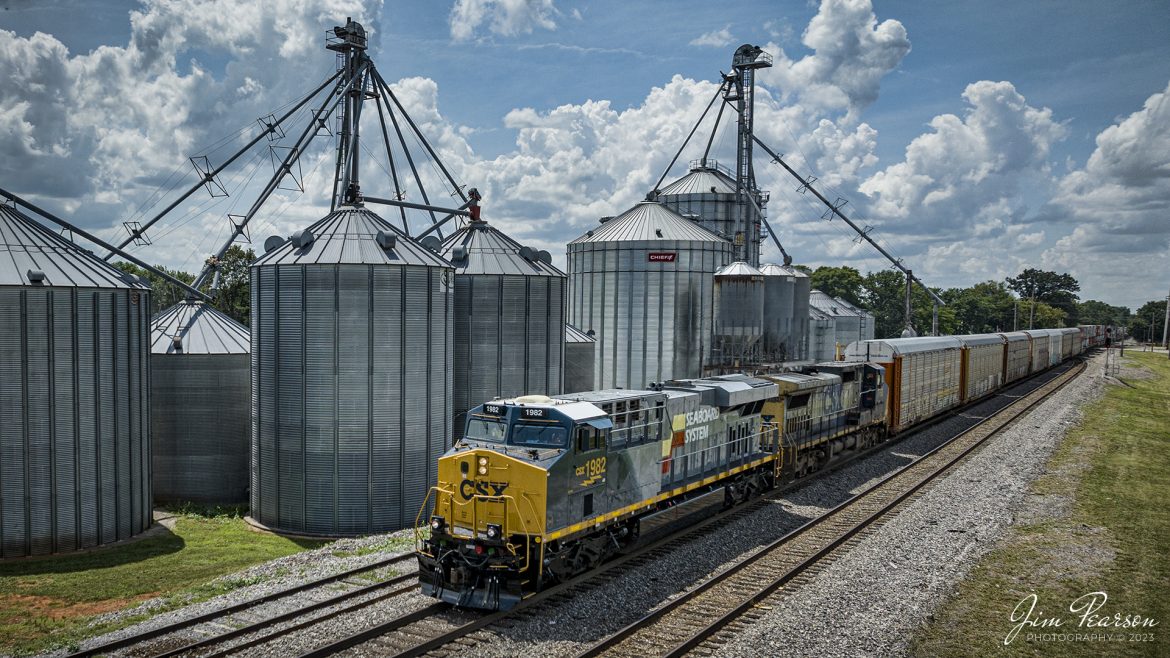
![One of the new CSX Heritage series locomotives, the Baltimore & Ohio unit 1827, leads CSX hot intermodal I028 as it makes its way past the old depot at Princeton, Indiana, on July 17th, 2023, as it heads north on the CSX CE&D Subdivision.
The station was built in 1875 and has been beautifully restored. It served the C&EI and L&N railways during its day and was the lifeline of commerce and transportation for the county. Passenger service was discontinued in the late 1960s and today it is home to the Gibson County Visitors Center and features a railway museum with a restored Wabash caboose.
According to Wikipedia: The Baltimore and Ohio Railroad was the first common carrier railroad and the oldest railroad in the United States with its first section opening in 1830.
The Chesapeake and Ohio Railway took financial control of the B&O in 1963.[52] On May 1, 1971, Amtrak had taken over all the remaining non-commuter routes of the B&O. The B&O already had a controlling interest in the Western Maryland Railway. In 1973 the three railroads were brought together under one corporate identity, the Chessie System, although they continued to operate as separate railroads.
In 1980 the Chessie System and Seaboard Coast Line Industries, a holding company that owned the Seaboard Coast Line, the Louisville & Nashville, the Clinchfield, and the Georgia Railroad, agreed to form CSX Corporation. SCL Industries was renamed the Seaboard System Railroad (SBD) in 1983, the same year that the Western Maryland Railway was completely absorbed into the B&O. SBD was renamed CSX Transportation (CSX) in 1986. On April 30, 1987, the B&O's corporate existence ended when it was absorbed into the Chesapeake and Ohio Railway, which merged into CSX Transportation on August 31 of that year.
Tech Info: DJI Mavic 3 Classic Drone, RAW, 24mm, f/2.8, 1/2000, ISO 210.
#trainphotography #railroadphotography #trains #railways #dronephotography #trainphotographer #railroadphotographer #jimpearsonphotography #trains #csxt #mavic3classic #drones #trainsfromtheair #trainsfromadrone #CSXHeritageUnits](http://www.jimpearsonphotography.com/wp-content/uploads/2023/07/WEB-07.17.23-Drone-CSX-I028-NB-with-BO-Heritage-Unit-1827-at-Depot-Princeton-IN-1170x658.jpg)
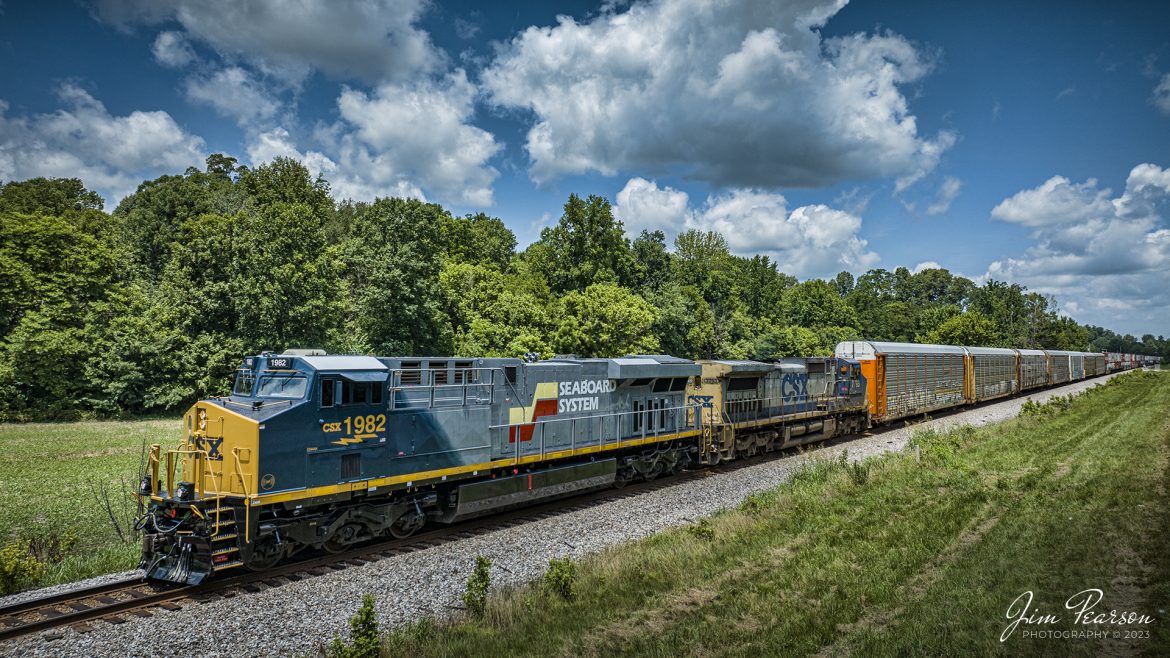
![The new CSX Heritage series locomotive, the Baltimore & Ohio unit 1827, leads CSX hot intermodal I018 as it makes its way across the Ohio River from Henderson Kentucky on its northbound move on the Henderson Subdivision, on July 17th, 2023.
According to Wikipedia: The Baltimore and Ohio Railroad was the first common carrier railroad and the oldest railroad in the United States with its first section opening in 1830.
The Chesapeake and Ohio Railway took financial control of the B&O in 1963.[52] On May 1, 1971, Amtrak had taken over all the remaining non-commuter routes of the B&O. The B&O already had a controlling interest in the Western Maryland Railway. In 1973 the three railroads were brought together under one corporate identity, the Chessie System, although they continued to operate as separate railroads.
In 1980 the Chessie System and Seaboard Coast Line Industries, a holding company that owned the Seaboard Coast Line, the Louisville & Nashville, the Clinchfield, and the Georgia Railroad, agreed to form CSX Corporation. SCL Industries was renamed the Seaboard System Railroad (SBD) in 1983, the same year that the Western Maryland Railway was completely absorbed into the B&O. SBD was renamed CSX Transportation (CSX) in 1986. On April 30, 1987, the B&O's corporate existence ended when it was absorbed into the Chesapeake and Ohio Railway, which merged into CSX Transportation on August 31 of that year.
Tech Info: DJI Mavic 3 Classic Drone, RAW, 24mm, f/2.8, 1/2000, ISO 210.
#trainphotography #railroadphotography #trains #railways #dronephotography #trainphotographer #railroadphotographer #jimpearsonphotography #trains #csxt #mavic3classic #drones #trainsfromtheair #trainsfromadrone #CSXHeritageUnits](http://www.jimpearsonphotography.com/wp-content/uploads/2023/07/WEB-07.17.23-Drone-CSX-I028-NB-with-BO-Heritage-Unit-1827-on-bridge-from-Henderson-Ky-1170x658.jpg)
